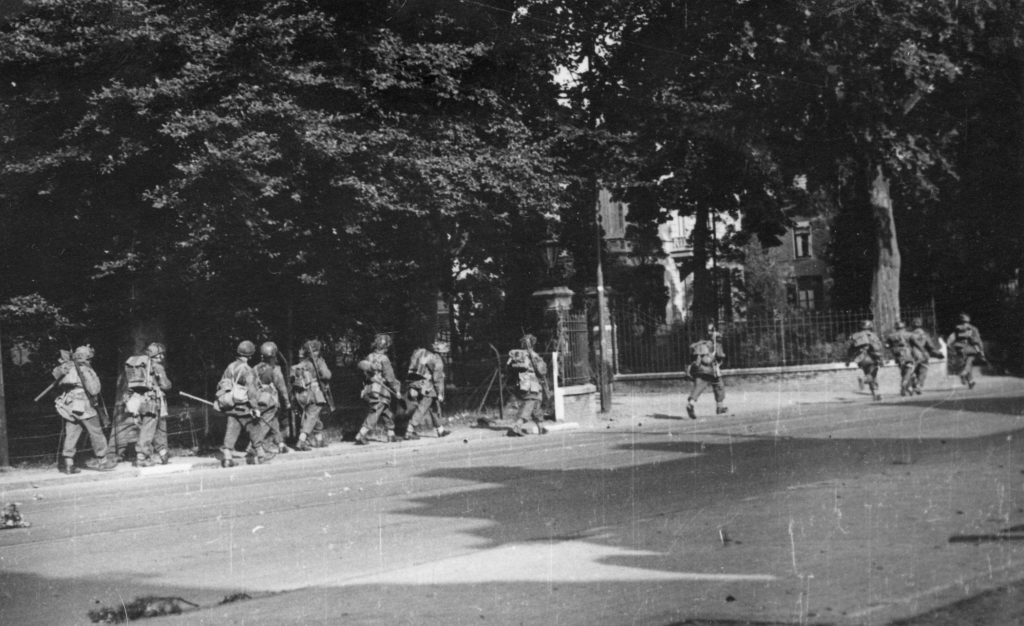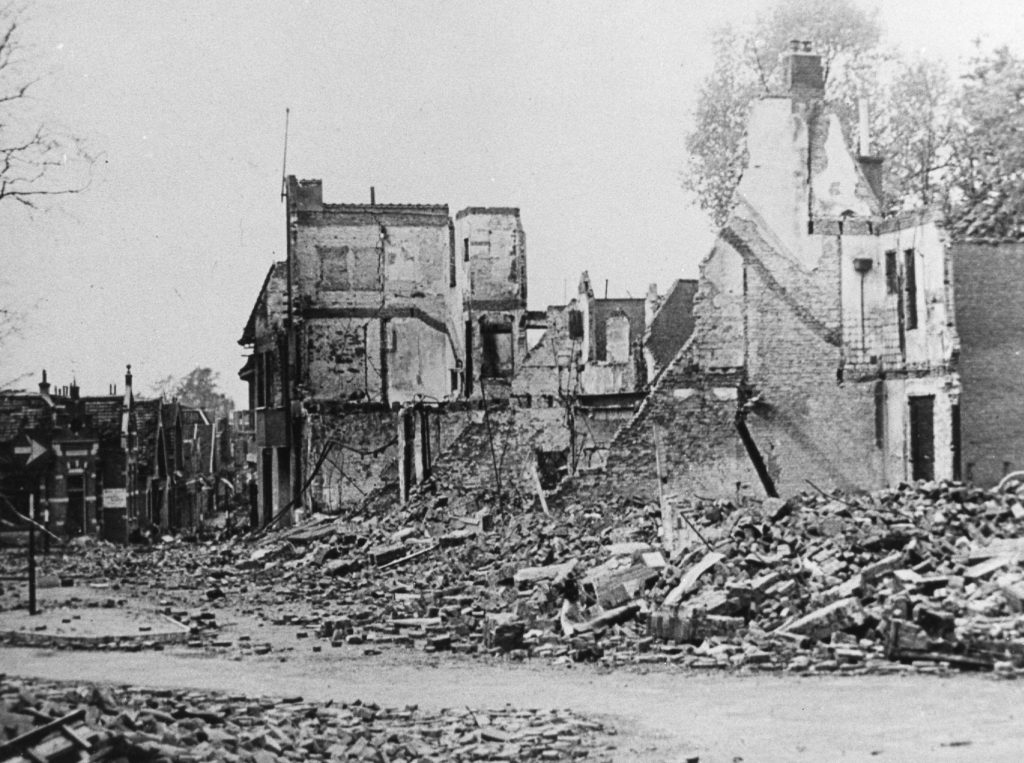- Raadhuisplein 1, 6862 CH Oosterbeek, Netherlands
The first four years of the war were relatively quiet in Oosterbeek, and with the advance of the Allied armies in early September 1944, liberation seemed almost in sight. The tide turned, however, and Oosterbeek became part of the battlefield.
Oosterbeek had remained relatively untouched by the war during the first four years of German occupation, and on 5 September 1944 -a day known as “Dolle Dinsdag” (Mad Tuesday)- liberation seemed imminent. The Germans were on the run. Unfortunately, celebrations proved premature when the German retreat came to a halt. The Allied High Command decided to conduct a gigantic, combined airborne and ground operation. Part of that plan was the capture of the Arnhem road bridge by the British 1st Airborne Division. The British Second Army could then move north across the bridge.
On Sunday afternoon, 17 September 1944, the first group of paratroopers and gliders landed on the fields near Wolfheze and Heelsum. Sadly, only around 750 men reached the Arnhem bridge. On Monday morning, 18 September, the British troops moved through Oosterbeek via the Utrechtseweg, on foot and in Jeeps. The citizens watching the spectacle were elated. Here, at last, were the liberators, who had almost literally fallen from the sky! The German troops reacted quickly, deploying heavy tanks against the lightly armed British forces. The fast response prevented the rest of the division from reaching the Arnhem bridge, which fell back into German hands on 21 September. The remaining Airborne units gathered in and around the town of Oosterbeek. The British bridgehead was surrounded by the German army and came under heavy attack; on the night of 25 to 26 September 1944, the remainder of the division was forced to retreat across the Rhine.
After the Battle of Arnhem, the citizens of Oosterbeek and the surrounding area were ordered to leave their homes immediately. Many of the homes were looted by German troops after the evacuation.
In the following months, the German troops built extensive military fortifications on the southern Veluwe’s high hills and looted houses and buildings. Allied shelling caused even more damage in Oosterbeek and its surroundings than was caused during the fighting in September 1944.
In the spring of 1945, Allied operations began to liberate the still-occupied part of the Netherlands from the German occupation. After taking Arnhem, British units moved through the destroyed town of Oosterbeek on 17 April 1945. It was empty and deserted because the German soldiers had withdrawn shortly before.
For the second time within a year, Allied troops had liberated the village of Oosterbeek, but there were no cheering crowds along the road this time. Nevertheless, ‘the liberation’ was now complete!


